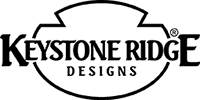June 26, 2023
Transit & Bus Stop Furnishings
Whether you are waiting at a bus stop or just walking by, bus stop furniture plays an important role in the pedestrian experience and in the public’s perception of the service. Street furniture at bus stops and transit centers provides clear visual markers for riders while offering a place for people to comfortably wait. Below we outline some of the common products and uses of site furniture for public transit locations
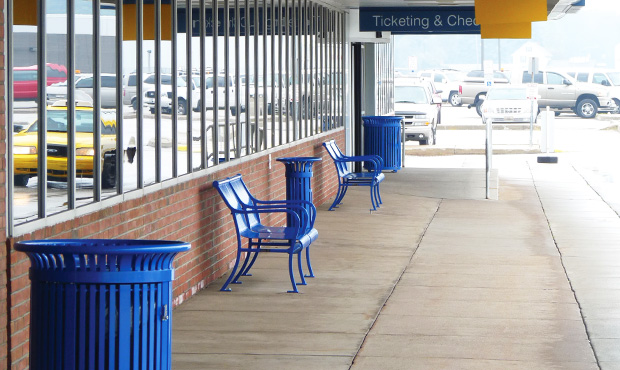
Bus Stop Seating
All public transit rides begin and end at a transit stop so effective seating is essential to accommodate the needs of riders. Bus stop benches and other transit station seating can be placed under transit shelters or as standalone furnishings when space doesn’t permit a shelter installation. For benches, you often find flat benches without a backrest as a space-saving option that provides versatility in seating direction.
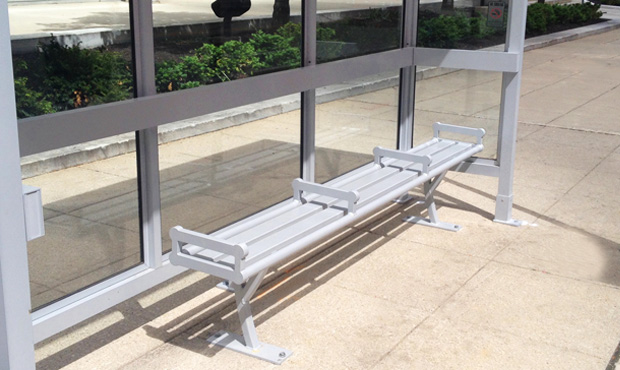
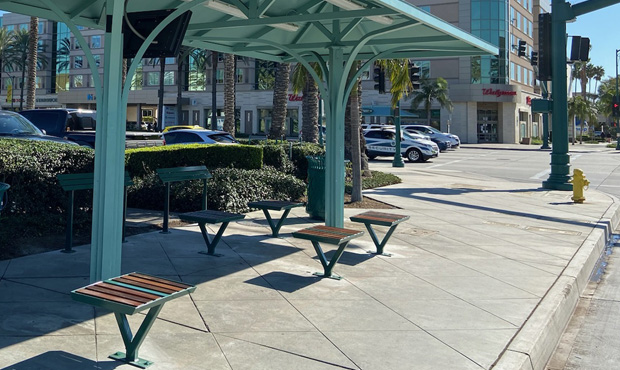
Benches with a backrest provide additional comfort to suit the needs and usage of your facilities. In any case, including center arms to delineate space and prevent long-term lounging is common at bus stop locations.
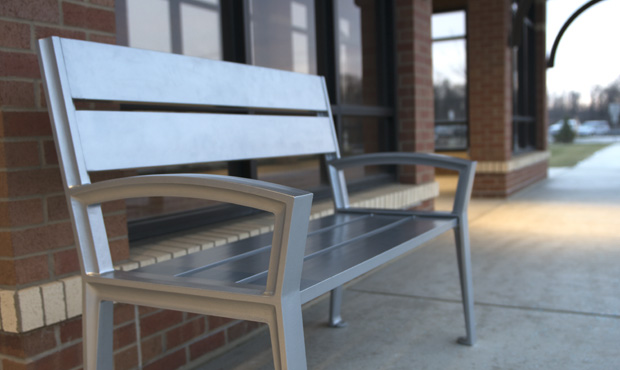
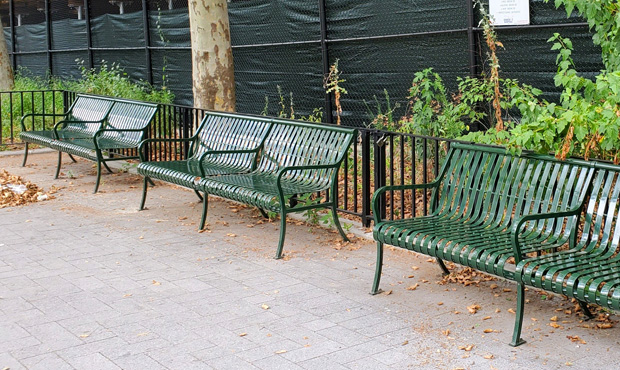
Leaning Rails
When space is very limited but you want to offer some type of resting solution, leaning rails for transit stations provide the perfect place for pedestrians to briefly lean back and take a load off. These resting bars can be used along with benches to offer multiple seating options or on their own in tight spaces or where loitering is discouraged. Subway stations are a great application for this unique product.
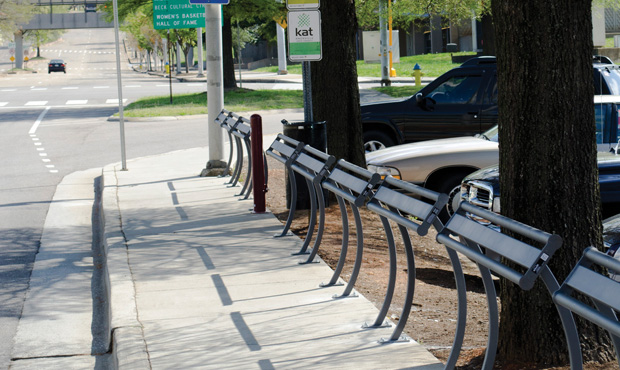
Litter Receptacles
In transient areas where people are constantly coming and going, you are likely to have an accumulation of trash. Prevent excessive littering by installing bus stop trash cans and recycling receptacles. Litter receptacles need to be placed in waiting areas for subway stations, railroad terminals, bus stops, and any other transit location to accommodate the busy pedestrian traffic and the trash that comes with it. Choose different lid options and graphics to encourage proper usage.
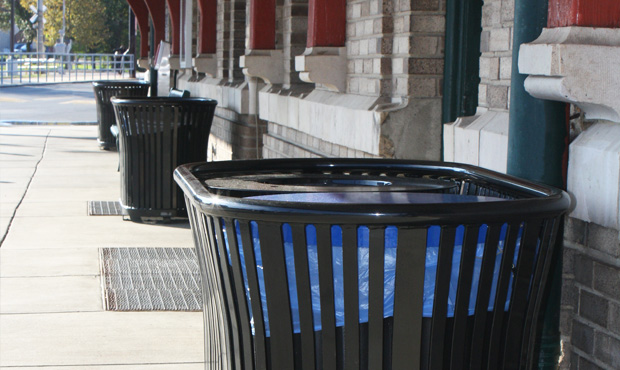
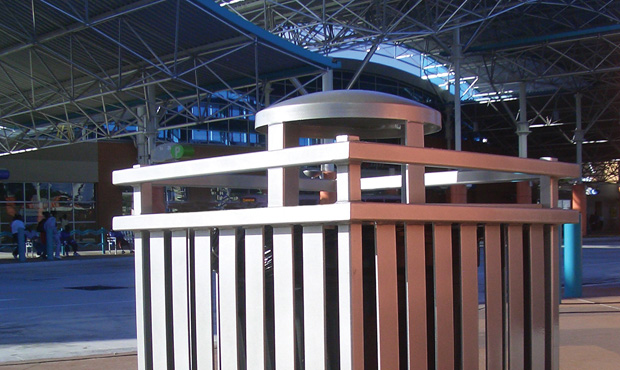
Bike Racks
Reduce the amount of vehicular traffic in your city by encouraging many forms of alternative transportation. A comprehensive transit strategy should consider the needs of bicycle commuters. Installing bike racks at transit stops or nearby allows pedestrians to ride their bikes to the transit stations and other locations throughout the city. Bike racks offer clear designated places to park and lock up bikes.
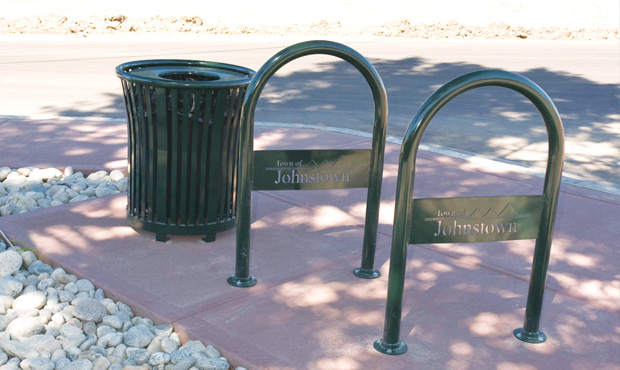
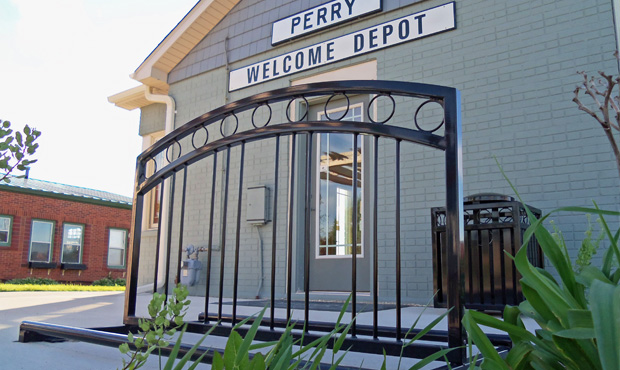
Signage
Bus stop signage can help to provide information, wayfinding, advertising, or transit department branding. You can do this with freestanding signs or kiosks with printed graphics, or custom signage can be incorporated into furnishings for a unique way to combine the seating and signage needs.
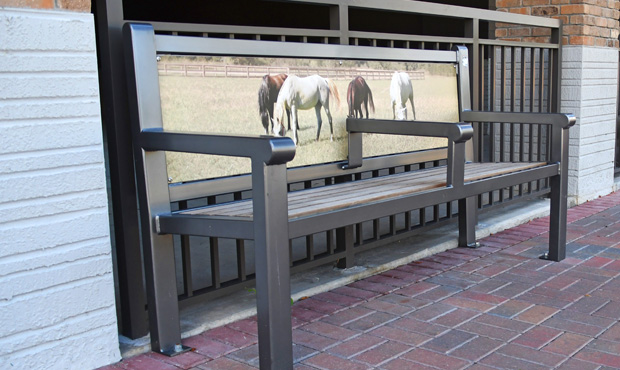
Site furniture does more than just offer places to sit while waiting for a bus or train. How transit areas and bus stops are furnished helps to send messages to the public that the provided transportation service is clean, safe, and informative and a practical alternative to driving. Make sure you have the right products installed at every transit location to maintain consistency, functionality, and aesthetics and to create welcoming stops to come and go.
ARCHIVES
- Keystone Ridge Designs Celebrates World Landscape Architecture Month
- Sustainability At Keystone Ridge Designs
- Mix And Match Site Furniture Designs
- Planning For Planters
- Downtown Decorations: Deck The Streets With Benches & Holly
- Customized Site Furniture Solutions: How To Tailor Site Furnishings To Fit Your Space
- The Making Of A Streetscape
- Powder Coating Perfection
- Project Highlight - UPMC Mercy Pavilion
- Sing A Song Of Site Furnishings
- Transit and Bus Stop Furnishings
- Project Highlight - Latrobe, PA
- Litter Receptacle Lid Options
- Site Furniture Design Details
- Park Furniture
- What's New for 2023
- Trade Show Trips and Trends
- Giving Thanks And Giving Back
- What Are Site Furnishings?
- #FridayFabrication
- Outdoor Furniture For Schools
- Keystone Ridge Designs Top Sellers
- Site Furniture & Urban Design
- Production With Purpose
- Outdoor Chairs for Public Spaces
- Project Highlight: Cape May County Open Spaces
- Site Furniture Sets
- Residential Development Outdoor Trends
- ASLA Expo Recap
- 25 Years of Outdoor Furniture (Part II)
- Healthcare Site Furniture Trends
- Project Highlight - The Highline Pittsburgh
- Tips For Buying A Memorial Bench
- Zoo Furnishings
- Guide To Custom Signage And Graphics
- Outdoor Church Furniture
- Site Furniture Standards
- What Is A bollard?
- Outdoor Furniture For Ski Resorts
- Commercial Outdoor Furniture Trends for 2021
- 2020 Greatest Hits In Site Furnishings
- Design Timeline - Patented Site Furniture
- Spotlight On Garden Furniture
- 25 Years Of Outdoor Furniture
- Unique Outdoor Spaces
- Tips For Choosing Commercial Outdoor Table Sets
- Project Highlight - Longevity Bench Project
- Promoting Healthy Outdoor Spaces
- Signs Of Spring
- Project Highlight - Pianos About Town
- Powder Coating Color Trends
- All-Weather Site Furnishings
- Top 6 Traditional Commercial Bench Designs
- Top 9 Modern Outdoor Benches For Commercial Settings
- Made In The Shade: Choosing The Best Commercial-Grade Umbrella
- Outdoor Seating Alternatives: Think Outside The Bench
- Project Highlight - The Tracks At Brea
- Sites Of Summer
- Fundraising With Furnishings
- Durable Site Furniture - What Does That Mean?
- Customization 102
- New For 2019
- How It's Made
- Fall Photos And Furnishings
- Site Furnishings For Senior Living
- Project Highlight - Echo Park Lake
- Park Bench Workout
- Site Furniture And Planning For Public Safety
- The Art Of Bike Racks
- Site Furniture Materials 101
- What's New?
- Project Highlight - Carson City Revitalization
- Reducing Waste - It Takes All Sorts
- Putting The Fun In Furniture
- Site Furniture Placement Guidelines
- Project Highlight - City Of Weston, FL
- Focus On Photography
- Thankful At Thanksgiving
- How To Accessorize Your Landscape
- Why Powder Coat?
- Top 5 Unusual Customizations
- Site Furniture For Kids
- Customization 101
- Project Highlight - McCandless Crossing
- How To Save Money On Site Furniture
- Christmas With Keystone Ridge Designs
- Retail Branding
- Halloween Costume Ideas
- The Benefits Of Steel Site Furniture
- A Campus Standard - Why It's Important
- Guide To Plaques
- Four Trends In Site Furniture
